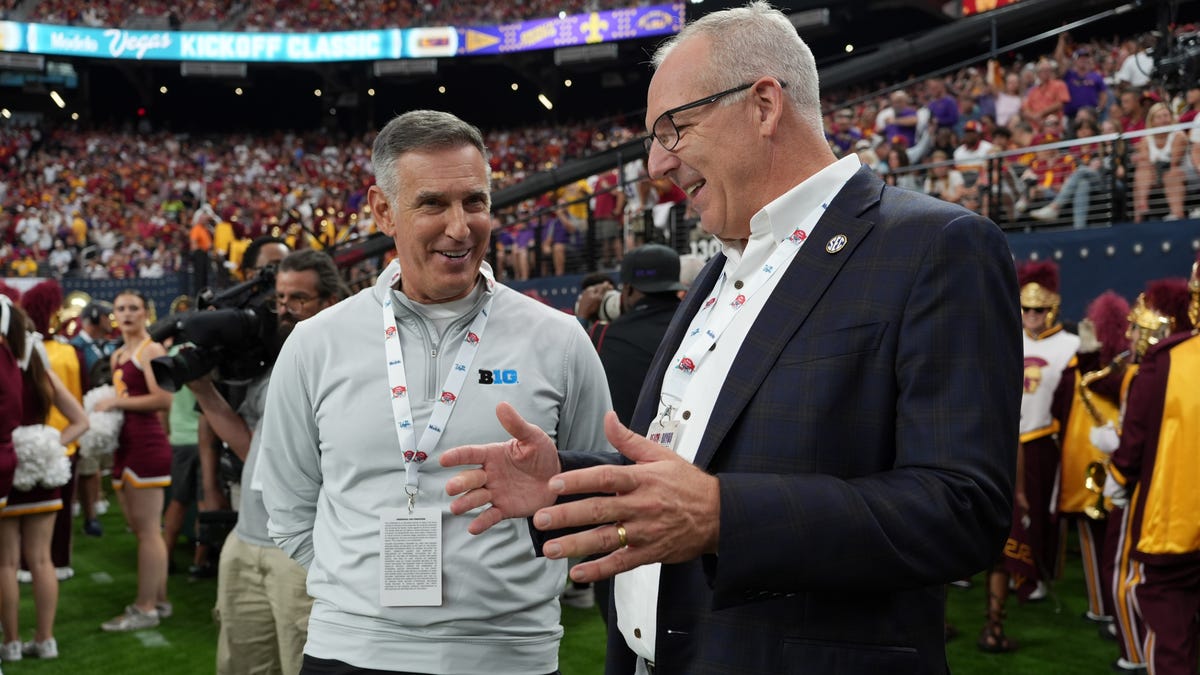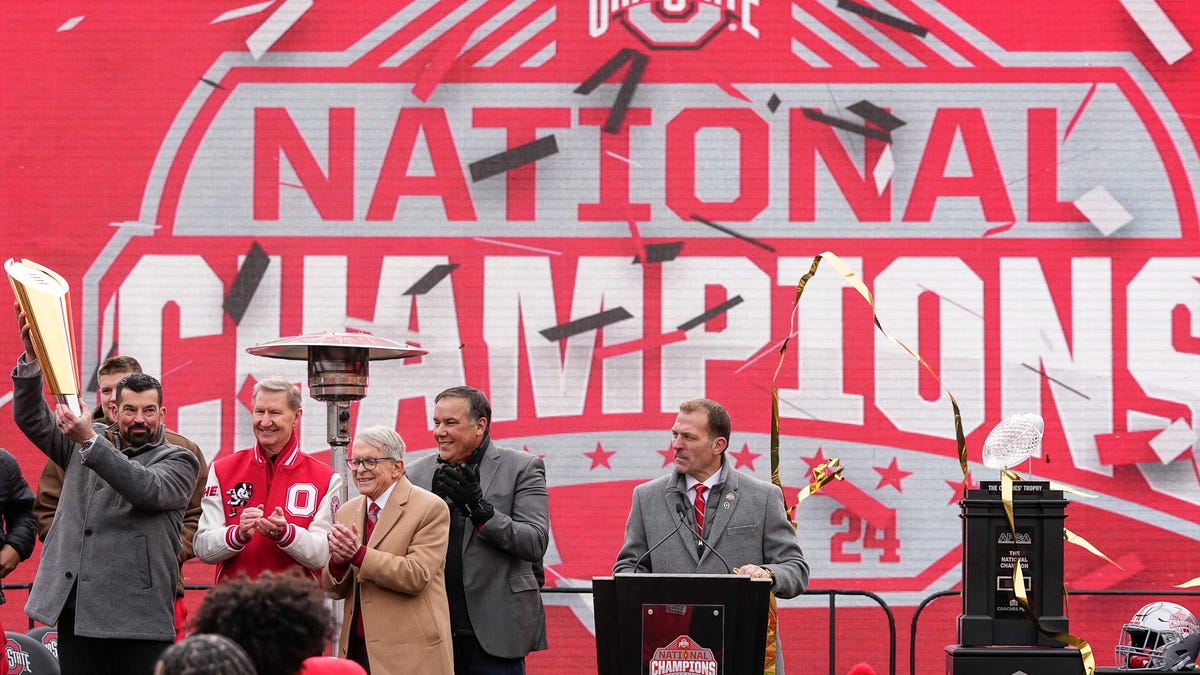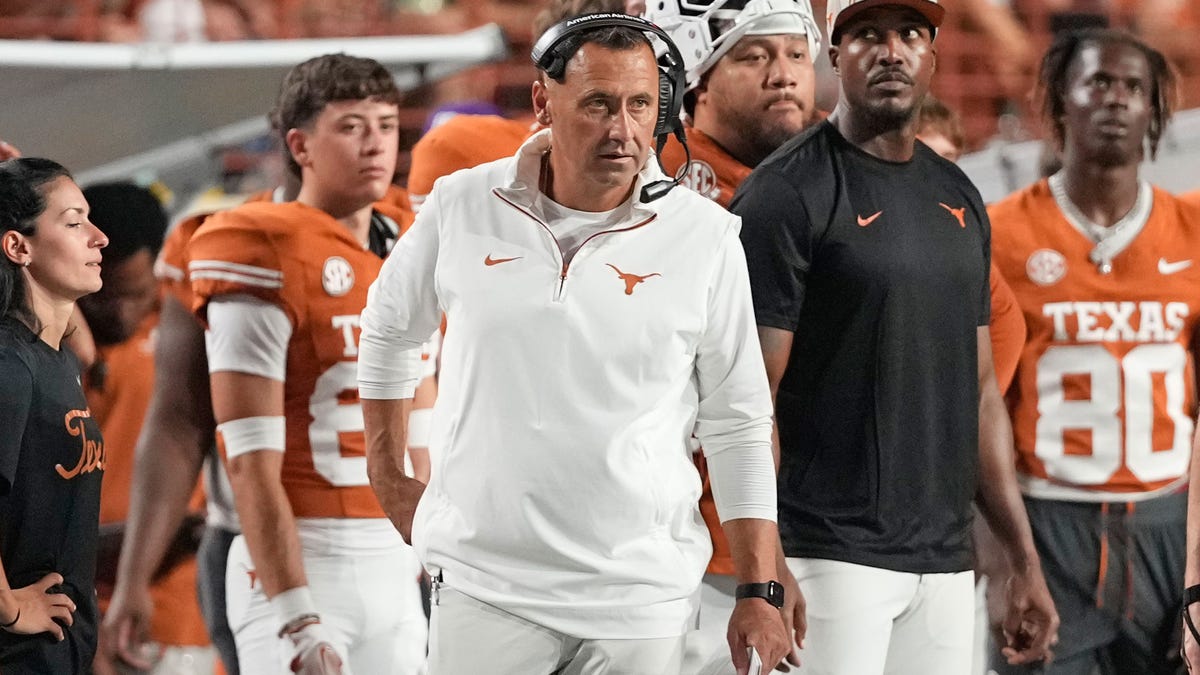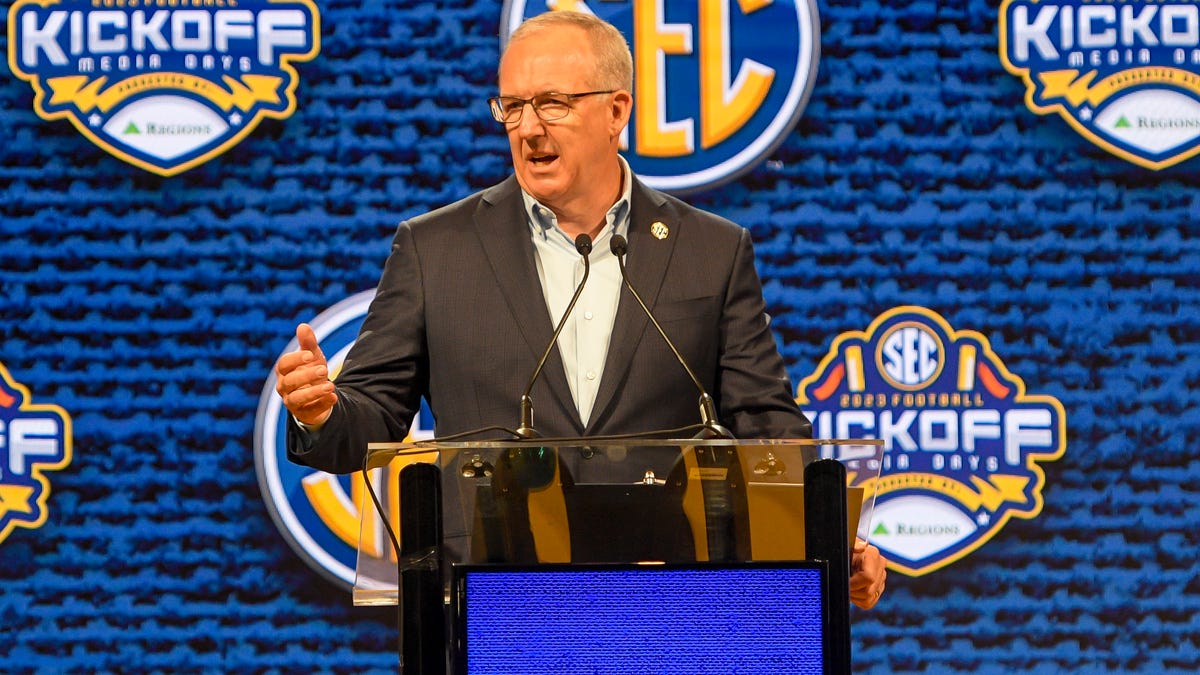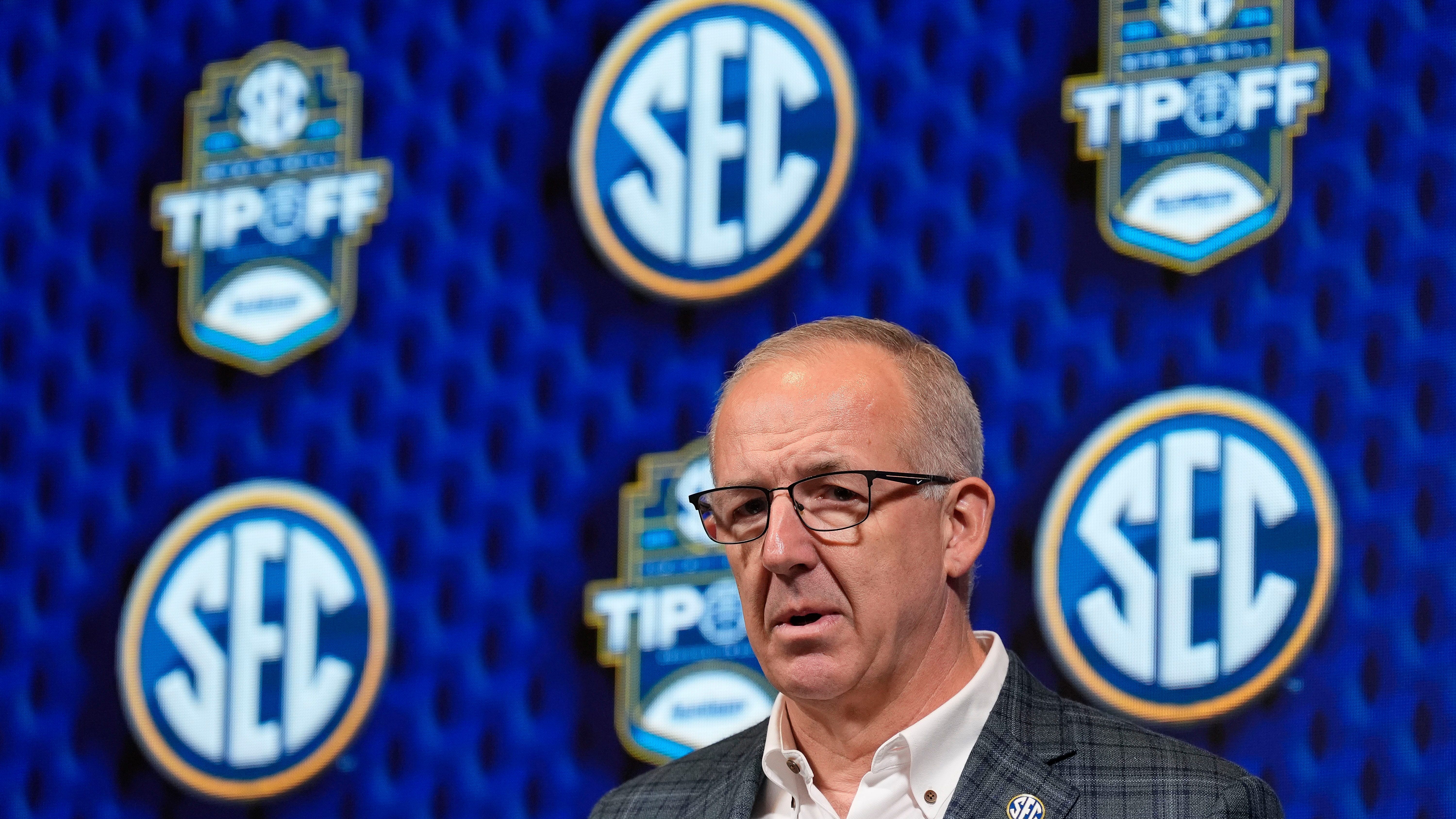
SEC Commissioner Greg Sankey speaks on the court after the Gators won the national title
The Gators defeated Houston 65-63 Monday night at the Alamodome in San Antonio to win the program’s third national championship.
MIRAMAR BEACH, Fla. — The Big Ten’s preferred playoff model is a trojan horse for the SEC.
And still, the SEC keeps inching toward the horse’s belly.
If the Big Ten gets its way, the College Football Playoff would move in 2026 toward a format in which more bids are awarded via automatic selection.
The idea works like this: In a 16-team field, the Big Ten and SEC would get four automatic bids apiece, the ACC and Big 12 would get two auto bids apiece, the Group of Five would get one auto bid, and that leaves three at-large bids up for grabs. In many years, Notre Dame would snag one of the three at-large bids.
It’s easy to understand why the ACC and Big 12 dislike this model. It preassigns twice as many automatic bids to the Big Ten and SEC before the season even kicks off. It’s a model based more on conference brand prestige than in-season meritocracy.
What’s more difficult to comprehend is the SEC’s swelling support for this model.
On the surface, the auto-bid model sounds OK for the SEC.
Upon deeper consideration, though, a better model for the SEC’s quest to stockpile bids would be a 16-team model that assigns all bids via at-large selection. SEC commissioner Greg Sankey seems to understand this, but will his conference’s membership resist the auto-bid plan?
“For all the gripes about us having four (automatic bids), go back and look at the previous 11 years … we actually lose more spots under that (auto-bid) model than anybody else,” Sankey said Monday before his conference’s spring meetings.
Bingo. There’s plenty of reason for the SEC to be wary of this auto-bid model.
The SEC considers itself the toughest, most rugged conference. As such, it would be foolish to embrace a playoff model that restricts its members from accessing nine of the 16 bids.
“If you actually go back and do the research, that kind of format could cost us positions,” Sankey said.
Exactly.
The SEC would be wise to punt this trojan horse back across the Mason-Dixon Line.
Auto-bid College Football Playoff model could backfire on SEC
As recently as a few years ago, Sankey most favored playoff models that assigned all bids via at-large selection. He ought to keep up that energy, and make his membership understand that the best model for the SEC – and the best model for the sport – is a playoff model that limits automatic bids, instead of awarding more.
A 16-team playoff with all bids decided via at-large selection would be a boon for the SEC, if only the SEC could look past the Big Ten’s auto-bid bait.
Forget the auto bids. A 16-team, all at-large, playoff could be so simple:
∎ Devise a set of playoff selection criteria designed to identify the 16 best teams.
∎ Play the games.
∎ Have a committee select the 16 best teams based on the approved criteria, or bring back an analytical ranking system designed to identify the 16 best teams.
If last year’s playoff had included 16 teams based off the CFP rankings, the SEC would have qualified six teams. Six.
The SEC doesn’t need this 4+4+2+2+1 auto-bid format, and the ACC and Big 12 don’t want this format, and yet this idea keeps gaining steam within the SEC. Oh, what a delight for the Big Ten.
“I have, over time, talked about, hey, let’s just have fill-in-the-blank-number best teams,” Sankey said. “That goes back to 2019, 2020 playoff expansion (talks). I’ve reiterated that. I think our room has an interest in a different model.”
In other words, SEC athletics directors are positioning themselves to be duped by the auto-bid plan.
Here’s why SEC athletics directors might like auto-bid playoff plan
So, why might the SEC go for this auto-bid plan?
For starters, risk aversion.
Being assigned four playoff bids before the season begins would allow the SEC to go from eight to nine conference games without having to worry so much about win-loss records.
Also, auto bids based purely off conference results would encourage teams to beef up their non-conference schedule, because an auto-bid format reduces the penalty of non-conference losses.
Plus, the auto-bid plan would allow a conference to conduct play-in games.
If the Big Ten and SEC receive four automatic bids apiece, they could reserve two bids for the top two teams in their standings, then pit No. 3 versus No. 6 and No. 4 versus No. 5 in a play-in bonanza to determine the final auto bids.
“I think the word ‘hope’ is at the center (of this proposed format),” Sankey said. “How do you bring people into the conversation late in the season? So the idea of, could you have play-in type games continues to (surface).
“That’s about building interest and giving hope. Whether that’s the ultimate destination, we’ll see.”
That might sound OK in theory, but, what does that look like in practice?
Iowa, a team that went 8-5 last season, would have still been alive for the playoff on play-in Saturday, because the Hawkeyes finished sixth in the Big Ten standings.
South Carolina finished sixth in the SEC last season and was ranked No. 15 in the final CFP rankings. It would have qualified for a 16-team playoff, if all bids were awarded via at-large selection.
Iowa, by comparsion, was not ranked in the final CFP rankings.
So, it’s easy to understand why Iowa would love this auto-bid playoff idea. It’s easy to understand why a host of other mediocre Big Ten teams would like this playoff idea. Finish sixth in the Big Ten standings, sprinkle in some play-in magic, and, viola, a playoff bid emerges.
It’s harder to understand why the big, bad SEC would embrace a playoff format that most benefits Big Ten teams like Iowa, Illinois, Minnesota and Washington.
Blake Toppmeyer is the USA TODAY Network’s national college football columnist. Email him at BToppmeyer@gannett.com and follow him on X @btoppmeyer.






